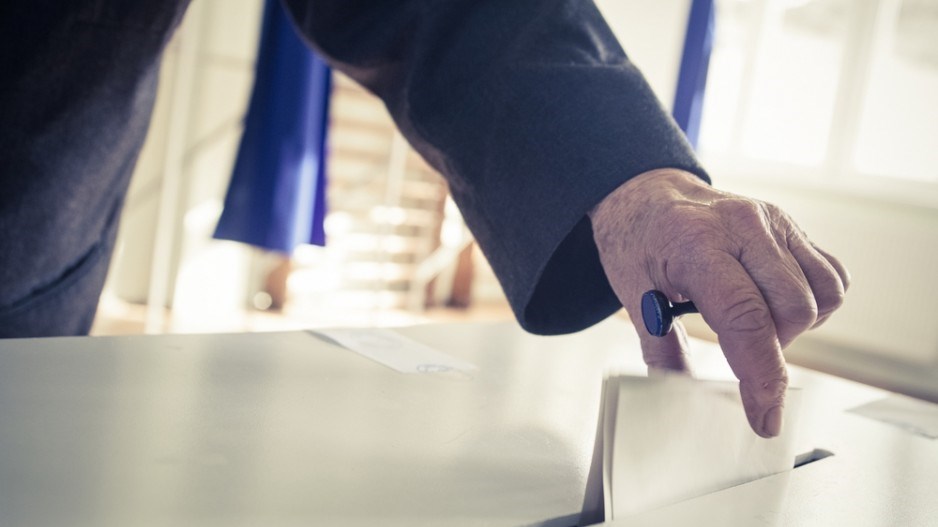In less than month, Canadians will elect a new House of Commons.
The first weeks of the campaign provided several opportunities for voters to know more about the leaders, candidates and platforms. We have seen one televised debate where some of the contenders were featured, as well as a controversy over the behaviour of Justin Trudeau many years before he decided to seek public office.
Research Co. conducted a survey of Canadians this week, and the results provide a bit of good news to the governing Liberal Party. Their share of the “decided vote” is up two points since July to 36%, and they remain the top choice in Atlantic Canada (41%), Ontario (39%) and Quebec (37%). In British Columbia, a province where the Liberals have fared well in only one election this century, they are slightly ahead of the Conservatives (35% to 32%).
In spite of all the discussions about Trudeau’s past wardrobe and costume choices, his approval rating did not go through any fluctuation over the past two months and remains at 41%. It must be said that the incumbent prime minister’s momentum score is negative, with almost half of Canadians (46%) saying that their opinion of Trudeau has worsened since the start of the electoral campaign.
The Conservative Party also saw its fortunes improve, jumping two points at the national level and reaching 33%. Alberta and the Prairies remain solidly behind the main opposition party (47% and 37% respectively), but Scheer has not been able to get ahead on the important “preferred prime minister” indicator. A third of Canadians (33%) pick Trudeau for the country’s top political job, while Scheer is a distant second with 24%.
Weeks of hammering Trudeau on the SNC Lavalin and the so-called “brownface” scandals did not allow Scheer to gain traction on accountability and leadership (25% of Canadians think the Conservative leader is superior for this file, practically even with Trudeau at 24%).
Scheer is also essentially tied with Trudeau on being the best person to handle the economy and jobs (27% and 28% respectively). Conservative politicians usually fare well on this question during campaigns. In the United States, even Mitt Romney was ahead of Barack Obama as a better economic manager in 2012. If the early focus of the Tory campaign on trust and finances had been successful, Scheer would be decisively ahead of Trudeau on these two pivotal maters.
For the New Democratic Party (NDP), the current state of affairs recalls the first elections with Jack Layton as leader. While the proportion of Canadians who approve of the performance of Jagmeet Singh increased by seven points to 42%, the share of the decided vote for the NDP dropped by two points to 15%.
Singh, like Layton, is well-liked. His approval rating among Canadians aged 18 to 34 is extraordinary (56%, compared to 47% for Trudeau). It would seem that the questions that dogged the New Democrats in 2006 and 2008 are reappearing. It was only in 2011, with an unambiguously weak Liberal leader, that centre-left voters provided Layton with not just a thumbs-up for his performance but also with support at the ballot box.
While Singh is not currently seen as the best leader to handle any one of the main issues facing the country, he does better on topics where NDP leaders – provincially and federally – usually hold higher ratings, such as housing, homelessness and poverty and health care.
The environment is now the top issue facing the country for 22% of Canadians, just one point more than the economy and jobs. This has been a week of added emphasis on climate change, with organized strikes and Greta Thunberg’s visit to the United Nations.
Elizabeth May’s approval rating remains high (44%), but only 9% of decided voters are ready to give their vote to the Greens. Support is concentrated, as expected, in British Columbia and Atlantic Canada, where Jo-Ann Roberts is seeking to defeat incumbent Liberal MP Andy Filmore in Halifax.
The Bloc Québécois improved slightly to 5% at the national level and is fighting for second place with the Conservatives in the province. While this level of support is nowhere near what the Bloc used to garner in previous campaigns under Gilles Duceppe, it serves as a reminder of the precipitous collapse of the NDP in a province where they did so well eight years ago: fewer than one in 10 Quebecers (9%) would support the NDP if the election were held tomorrow.
Lastly, the People’s Party has not had a prodigious first weeks of the campaign. The presence of Maxime Bernier in the next two televised debates may help, but he is clearly having difficulties bonding with a broader audience. Bernier’s rating fell to 17% across the country and the nationwide share of the vote for the People’s Party stands at 2%.
The four main party leaders have pending matters to deal with in the next weeks. For Trudeau, it is about bringing back younger voters who may be looking elsewhere. For Scheer, it is essential to establish an emotional connection with Canadians who have so far not been moved by promises of a deficit-free federal government. If the race remains tight, Singh and May will need to discuss how their parties could become instrumental in a potential minority scenario.
Mario Canseco is president of Research Co.
Results are based on an online study conducted from September 24–26, 2019, among 1,000 adults in Canada. The data has been statistically weighted according to Canadian census figures for age, gender and region in Canada. The margin of error, which measures sample variability, is plus or minus 3.1 percentage points, 19 times out of 20.




